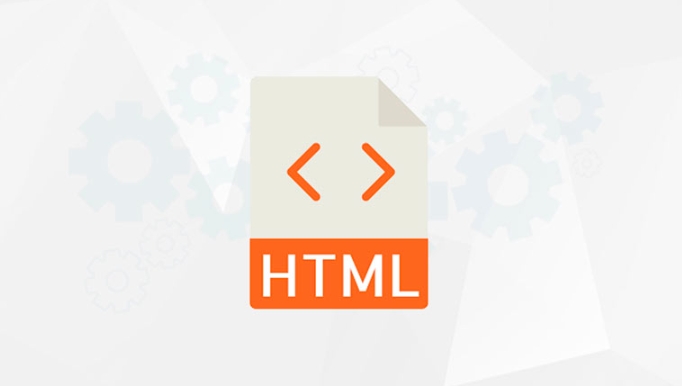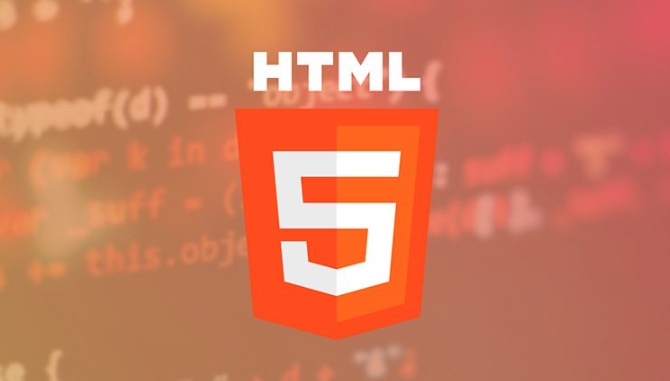Implementing Drag and Drop Functionality Using HTML APIs
Jul 10, 2025 pm 01:50 PMThe key steps to implement the draggable function include: 1. Use the draggable attribute of HTML5 to make the elements draggable; 2. Set drag data through the dragstart event; 3. Listen to the dragover and drop event processing placement logic in the target area; 4. Use the FileList object to realize drag and drop upload. The HTML5 native drag and drop API uses a series of event control processes, such as dragstart, dragover, drop, etc., where draggable custom elements need to be set to set draggable="true" and bind dragstart event, and call setData() to save data. When handling drag and drop, the default behavior of dragover must be blocked to trigger the drop event, and get data through getData() to complete element movement or file processing. When uploading files, you need to read the file list from dataTransfer.files to avoid direct access to the path. A common error is that the default behavior is missing to prevent drag and drop content from being received.

Implementing drag and drop functions is not complicated, especially when you are already familiar with HTML and JavaScript. HTML5 provides a native drag and drop API that allows us to complete basic drag and drop interactions without relying on third-party libraries. Let’s take a look at a few key points to help you get started quickly.

What is the HTML drag and drop API?
HTML5 native Drag and Drop API allows users to "drag" elements with their mouse and "place" them to another location. This function is often used in scenarios such as file upload, element sorting, etc.

It mainly controls the dragging and drop process through a series of events, including dragstart , dragover , drop , etc. Understanding the role and order of triggering these events is the first step in using the API.
How to make an element draggable?
By default, only links, images, and some form elements are draggable. If you want custom elements (such as divs) to be dragged, you need to set properties:

<div draggable="true">Drag me to try</div>
Then bind the dragstart event to it, which tells the browser what to drag:
document.querySelector('div').addEventListener('dragstart', function(e) {
e.dataTransfer.setData("text/plain", e.target.id);
}); The most critical point here is to call setData() method to save the dragged data so that it can be obtained in the target area.
How to deal with dragging and dropping into the target area?
Next you need to specify one or more "delivery areas", which are places where dragged into content. The usual practice is to listen for dragover and drop events.
-
dragover: The default behavior must be blocked, otherwisedropwill not fire. -
drop: Get dragged data here and process it.
The sample code is as follows:
const dropZone = document.getElementById('drop-zone');
dropZone.addEventListener('dragover', function(e) {
e.preventDefault(); // The default behavior must be blocked});
dropZone.addEventListener('drop', function(e) {
e.preventDefault();
const data = e.dataTransfer.getData("text/plain");
const draggedElement = document.getElementById(data);
dropZone.appendChild(draggedElement);
});A common mistake is to forget to block default behavior so that drag and drop content cannot be received correctly.
How to upload files by dragging and dropping?
If you want to support file drag-and-drop upload, such as letting users drag local files into web pages to upload, you need to use FileList object.
You can listen to drop events and get the file list from e.dataTransfer.files :
dropZone.addEventListener('drop', function(e) {
e.preventDefault();
const files = e.dataTransfer.files;
for (let i = 0; i < files.length; i ) {
console.log(files[i].name); // Print file name}
});This method is often used for functions such as image upload and document import. It should be noted that some browsers restrict access paths to certain types of files, so try to avoid directly reading file paths.
Basically that's it. After mastering these key steps, you can expand your functions according to your needs, such as adding visual feedback, supporting multiple selection drag and drop, etc. Although it seems a bit cumbersome, it is actually not difficult to do it step by step.
The above is the detailed content of Implementing Drag and Drop Functionality Using HTML APIs. For more information, please follow other related articles on the PHP Chinese website!

Hot AI Tools

Undress AI Tool
Undress images for free

Undresser.AI Undress
AI-powered app for creating realistic nude photos

AI Clothes Remover
Online AI tool for removing clothes from photos.

Clothoff.io
AI clothes remover

Video Face Swap
Swap faces in any video effortlessly with our completely free AI face swap tool!

Hot Article

Hot Tools

Notepad++7.3.1
Easy-to-use and free code editor

SublimeText3 Chinese version
Chinese version, very easy to use

Zend Studio 13.0.1
Powerful PHP integrated development environment

Dreamweaver CS6
Visual web development tools

SublimeText3 Mac version
God-level code editing software (SublimeText3)

Hot Topics
 How do I minimize the size of HTML files?
Jun 24, 2025 am 12:53 AM
How do I minimize the size of HTML files?
Jun 24, 2025 am 12:53 AM
To reduce the size of HTML files, you need to clean up redundant code, compress content, and optimize structure. 1. Delete unused tags, comments and extra blanks to reduce volume; 2. Move inline CSS and JavaScript to external files and merge multiple scripts or style blocks; 3. Simplify label syntax without affecting parsing, such as omitting optional closed tags or using short attributes; 4. After cleaning, enable server-side compression technologies such as Gzip or Brotli to further reduce the transmission volume. These steps can significantly improve page loading performance without sacrificing functionality.
 How has HTML evolved over time, and what are the key milestones in its history?
Jun 24, 2025 am 12:54 AM
How has HTML evolved over time, and what are the key milestones in its history?
Jun 24, 2025 am 12:54 AM
HTMLhasevolvedsignificantlysinceitscreationtomeetthegrowingdemandsofwebdevelopersandusers.Initiallyasimplemarkuplanguageforsharingdocuments,ithasundergonemajorupdates,includingHTML2.0,whichintroducedforms;HTML3.x,whichaddedvisualenhancementsandlayout
 How do I use the element to represent the footer of a document or section?
Jun 25, 2025 am 12:57 AM
How do I use the element to represent the footer of a document or section?
Jun 25, 2025 am 12:57 AM
It is a semantic tag used in HTML5 to define the bottom of the page or content block, usually including copyright information, contact information or navigation links; it can be placed at the bottom of the page or nested in, etc. tags as the end of the block; when using it, you should pay attention to avoid repeated abuse and irrelevant content.
 How do I use the tabindex attribute to control the tab order of elements?
Jun 24, 2025 am 12:56 AM
How do I use the tabindex attribute to control the tab order of elements?
Jun 24, 2025 am 12:56 AM
ThetabindexattributecontrolshowelementsreceivefocusviatheTabkey,withthreemainvalues:tabindex="0"addsanelementtothenaturaltaborder,tabindex="-1"allowsprogrammaticfocusonly,andtabindex="n"(positivenumber)setsacustomtabbing
 What is the declaration, and what does it do?
Jun 24, 2025 am 12:57 AM
What is the declaration, and what does it do?
Jun 24, 2025 am 12:57 AM
Adeclarationisaformalstatementthatsomethingistrue,official,orrequired,usedtoclearlydefineorannounceanintent,fact,orrule.Itplaysakeyroleinprogrammingbydefiningvariablesandfunctions,inlegalcontextsbyreportingfactsunderoath,andindailylifebymakingintenti
 What is the loading='lazy' one of the html attributes and how does it improve page performance?
Jul 01, 2025 am 01:33 AM
What is the loading='lazy' one of the html attributes and how does it improve page performance?
Jul 01, 2025 am 01:33 AM
loading="lazy" is an HTML attribute for and which enables the browser's native lazy loading function to improve page performance. 1. It delays loading non-first-screen resources, reduces initial loading time, saves bandwidth and server requests; 2. It is suitable for large amounts of pictures or embedded content in long pages; 3. It is not suitable for first-screen images, small icons, or lazy loading using JavaScript; 4. It is necessary to cooperate with optimization measures such as setting sizes and compressing files to avoid layout offsets and ensure compatibility. When using it, you should test the scrolling experience and weigh the user experience.
 How do I use the element to represent a section of navigation links?
Jun 24, 2025 am 12:55 AM
How do I use the element to represent a section of navigation links?
Jun 24, 2025 am 12:55 AM
The key to using elements to represent navigation link areas is semantics and clear structure, usually in conjunction with organizational links. 1. The basic structure is to put the parallel links in and wrap them inside, which is friendly to auxiliary tools and is conducive to style control and SEO; 2. Commonly used in or, for placing main navigation or footer link collections; 3. A page can contain multiple areas, such as main menu, sidebar or footer independent navigation.
 What are best practices for writing valid and well-formed HTML code?
Jul 01, 2025 am 01:32 AM
What are best practices for writing valid and well-formed HTML code?
Jul 01, 2025 am 01:32 AM
When writing legal and neat HTML, you need to pay attention to clear structure, correct semantics and standardized format. 1. Use the correct document type declaration to ensure that the browser parses according to the HTML5 standard; 2. Keep the tag closed and reasonably nested to avoid forgetting closed or wrong nesting elements; 3. Use semantic tags such as, etc. to improve accessibility and SEO; 4. The attribute value is always wrapped in quotes, and single or double quotes are used uniformly. Boolean attributes only need to exist, and the class name should be meaningful and avoid redundant attributes.






